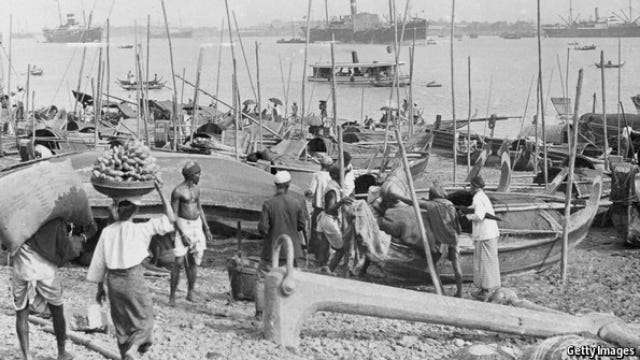Mainland Southeast Asia: Colonial Past and its Complex Repercussions

From the 1500s to mid-1940s, seven colonial powers ruled in Southeast Asia: Portugal, Spain, the Netherlands, Great Britain, France, the United States, and Japan. Each hegemony imposed changes in ancient political system, native’s cultures, traditions and religion. The untouched waters, vast lands and bygone civilizations in Southeast Asian region was once conquered and it resulted to a tremendous sequel.
In Mainland Southeast Asia, the landlocked territory of Laos was previously colonized by French colonizers. France introduced its architectural components into indigenous Lao architecture and adjusted them to fit the environment during its colonial rule in Lao PDR (from 1893 to 1953). In most major towns and cities, the French colonial aesthetic continues to have a minor influence. The perfect blend of ancient Lao architecture and French colonial influences displays a city’s true values and diversity. These distinctive architectural patterns and themes are important to the region’s legacy; many of them are still preserved today, particularly in Luang Prabang, which was named a UNESCO World Heritage Site in 1995 (Vongvilay, et.al, 2015). Together with Laos, Vietnam was also occupied by French powers and this resulted in a physical metamorphosis. Local traditional buddhist temples, tombs, and architecture were declared defunct and destroyed. The names of cities, villages, and streets throughout Vietnam were replaced with French ones. Banking and mercantile transactions, for example, were handled in French rather than the native languages. They say that portions of Hanoi and Saigon could have been mistaken as Paris, as it resembles French-like designs (Jennifer, L. et. al, 2019).
A religious dilemma happened in Myanmar when the country was dominated by British who ousted the Buddhist monarch. There were missionary schools established, and parents were forced to take their children to these schools since they had no other options. The educators were missionaries, and their courses were packed with criticism of Buddhism and its nature. The initial teachers in government schools were governmental workers, both British and Indian, who were unable or reluctant to uphold the earlier traditions (Steinberg, D. I., et. al, 2021). Britain extended its colonization to Singapore as well. A Professor of LAW in NUS, Tommy Koh balanced the good and bad impacts to Singapore under British regime. The advantages were the free ports, free trades, open economy. education, science and modernity which helped the success of Singapore. English was also embedded in today’s Singapore language and culture, a factor that gave them an edge over other countries. Many post-colonial nations might appear to have a sense that their culture is inferior to the West but in the Kingdom of Thailand, the only country in the region who managed to maintain its ancient culture, traditions and was never invaded by westerners stands still today with pride.
There is no doubt that colonial rulers left a lasting impression on Southeast Asian countries, in terms of the native’s living, society, education, culture, traditions, religion and even commerce. Moreover, colonial powers had undoubtedly altered Southeast Asia’s political, social, and economic landscapes. This history of colonization shaped a diversified region we have today and faced with its complex repercussion.
